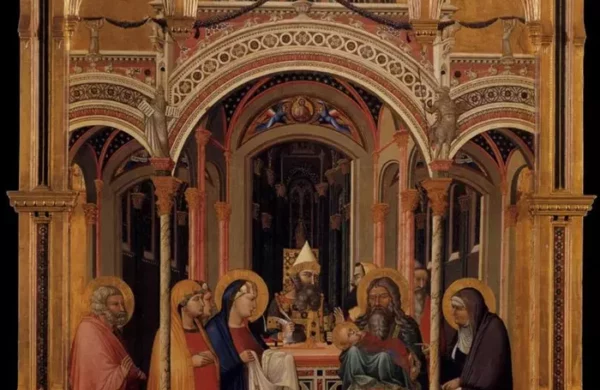
Church celebrates the Purification of Mary and the Presentation of Jesus. This event honors and fulfills the requirements from the Old Testament. The Law commanded that every mother should be cleansed from the experience of childbirth. The life of every firstborn child belonged to the Lord and must be redeemed. For readings look at Luke 2:22-32. This feast day is also called Candlemas by some. It is where the Candles have a tradition of being blessed. Also, some families wait until now to take down their Christmas ornaments. In celebration and for your viewing pleasure, I would like you to look up a painting by Ambrogio Lorenzetti.
Like this:
Like Loading...
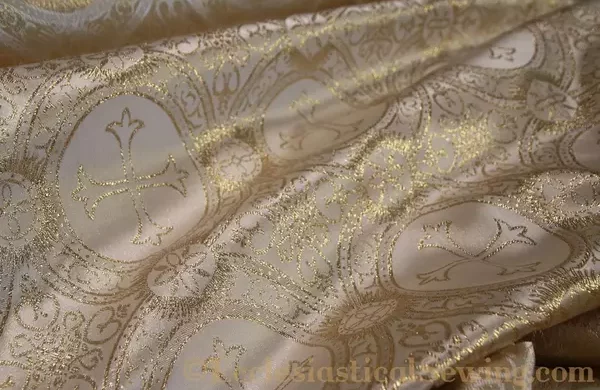
Ecclesiastical Sewing offers a special collection of white and gold liturgical fabrics for Lent and Good Friday. With unique patterns, including crosses and shimmering lurex threads, these fabrics are ideal for making chasubles, copes, altar hangings, and banners. The limited-time collection is perfect for churches with budget and provides an opportunity to create beautiful vestments for the seasons of the liturgical calendar.
Like this:
Like Loading...
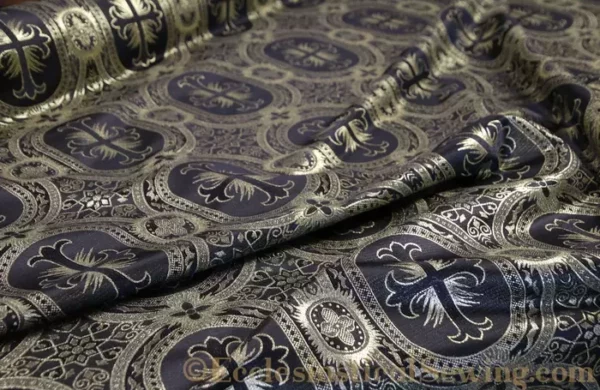
The Lenten Season is a time of year when black vestment fabrics are worn. The use of black will depend on which rites a church follows, but it is not uncommon to use black for Ash Wednesday as well as for Good Friday. This black brocade with a circle and cross motif has a nice weight and hand. It would work great if black hangings such as plain black banners were needed to drape in a church to create a somber mood for Good Friday. The fabric could also be used for any variety of church vestments and hangings.
Like this:
Like Loading...
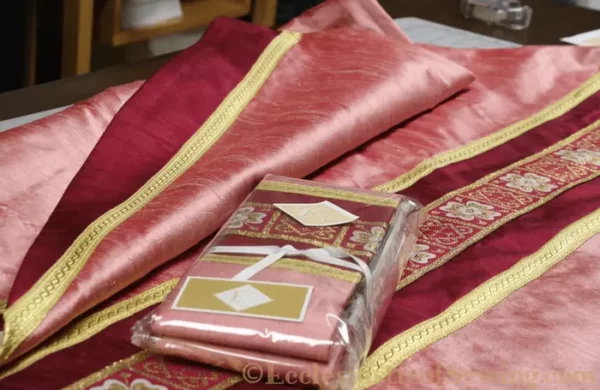
The use of rose vestments increases in popularity each year. The importance comes in as a means of teaching. The lessons for the day on Gaudete and Laetare Sunday have a lighter tone – a break from the heaviness of the Penitential seasons of Advent and Lent. It lets us know that there is a joy that awaits and it is just around the corner. The joy is Christmas (and Easter). And when the rose vestments come out, Christmas (or Easter) is almost upon us.
Like this:
Like Loading...
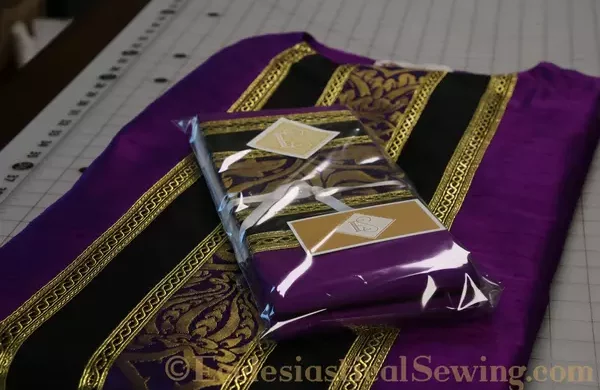
Featuring our beautiful violet stole and chasuble sets for Lent and Advent. They’re carefully made with rich Fairford brocade, perfect for church seasons. The St. Irenaeus Collection offers elegant Gothic and Monastic options.
Like this:
Like Loading...
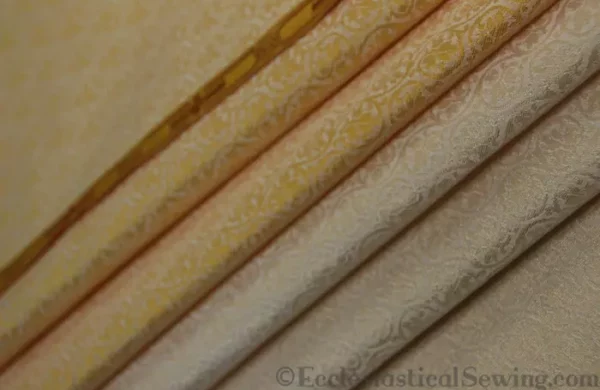
The fabrics can be a range of tapestry fabrics such as the stunning Aragon Tapestry with its large Jardinière design, Brocatelles such as Wakefield or Evesham Liturgical fabric. These are all lovely fabrics that can be used to make an entire vestment, or they can be cut and used for accents on other vestments. The size and scale of each of these fabrics allow for limitless options to fuel one’s imagination. These fabrics has shimmering threads woven into the intricate designs which adds so much to the beauty of the final vestments.
Like this:
Like Loading...
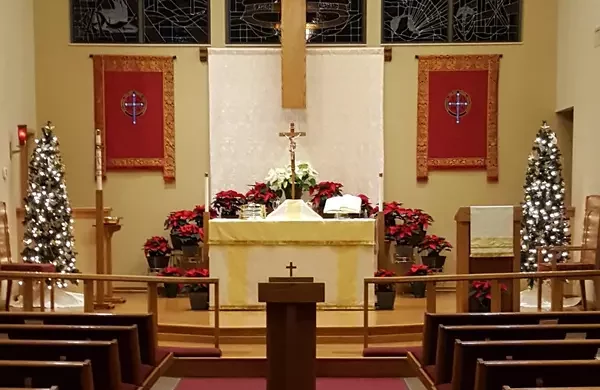
This little chapel sits in the corner of a larger room. A great deal of care has been taken with the chapel. There is an Advent stand with the Advent candles, a cross in the corner on the wall, the hymn board, the candles, and book stand on the altar, the altar linens and the altar hangings. The scene in the altar antependium is that of the manger in a circle or nimbus with the star. The various blues of the background indicate the shades of the nighttime sky. The charm comes in knowing that in this place, someone has taken care to ensure that the altar of the Lord is prepared for the services that will take place in this tiny chapel.
Like this:
Like Loading...

Embroiderer’s knight in shining armor – a true workhorse and fatigue saver. The trestles are set up about wide enough to have a chair positioned between each stand. Then the dressed slate frame is placed over the rails of the trestle stand. These are an embroiderer’s dream come true. The trestle stands and slate frames are handmade in Montana for Ecclesiastical Sewing.
Like this:
Like Loading...
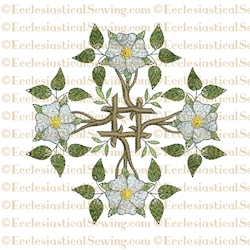
In Church symbolism, many objects are used to help teach the message of Christmas. The Christmas Rose or Messianic Rose is a particularly gentle yet elegant symbol. Helleborus Niger is a perennial plant that can actually grow in warmer parts of the USA. It is found naturally in Europe, where it blooms in cooler climates from February, but in warmer areas, it blooms as early as Christmas. This delicate white flower blooms from luscious evergreen foliage.
Like this:
Like Loading...
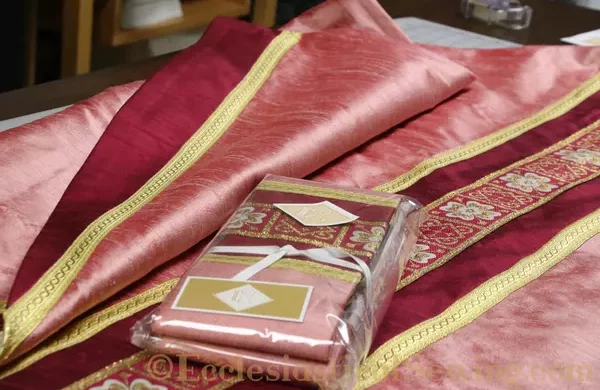
Rose is a color that falls under the heading of the purples and violets of the seasons of Advent and Lent. Rose as a vestment color is seen and used twice during the church year calendar. The days set aside for rose vestments and altar hangings are the Third Sunday of Advent and the Fourth Sunday of Lent.
Like this:
Like Loading...
Gaudete Sunday is the third Sunday in Advent and is a reprieve in this season–which by nature is a penitential season. Gaudete Sunday gives us a glimpse of the joy that awaits us and lightens the mood–one way this is done is with the change of the vestments from violet or blue to a rose color. Gaudete is the plural present active imperative of the Latin verb “to rejoice.”
Like this:
Like Loading...
Today we give thanks for the life of Saint Damasus I. He was Bishop of Rome from 366 A.D. to 384 A.D. During this period, Christianity was declared the official religion, Latin became the official language of the Church (as opposed to Greek), & Saint Damasus encouraged Jerome to translate the Bible into Latin.
Like this:
Like Loading...

The deacon stole pattern is no more difficult to make than a pastoral or clergy stole. The deacon stole sewing pattern has mitered seams at the shoulder and waist. It uses two pattern pieces: one for the top and one for the bottom of the stole. There are also separate pattern pieces for the interfacing and lining. The pattern allows for a 5/8” seam. A variety of cross appliques can be used on the shoulder seam. Whichever cross is chosen, will have a prominent display when the vestment is worn. Tassels or fringe may be applied at the bottom of the deacon stole, just as with the clergy stoles
Like this:
Like Loading...
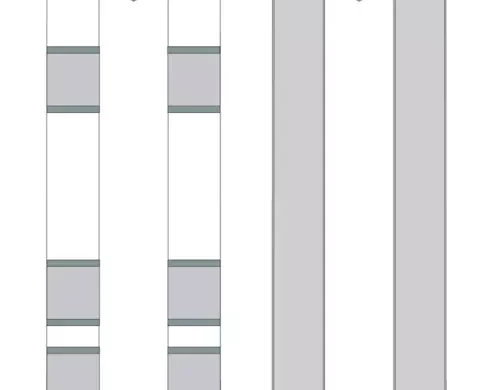
The V-Neck stole sewing pattern has become a favorite, a wider stole and can be made long enough to complement height requirements. This V-neck stole pattern is not any more difficult to make than a curved neck stole. There are points marked on the pattern to stitch so that the point will come out correctly. The pattern allows for a 5/8” seam. A variety of cross appliques can be used on the back neck seam.
Like this:
Like Loading...
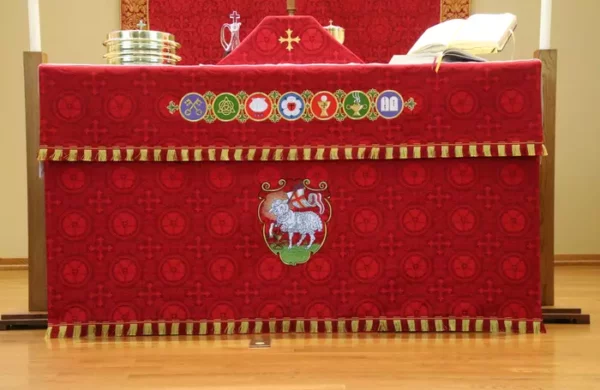
In Honor of the 500th Anniversary of the Reformation
Like this:
Like Loading...

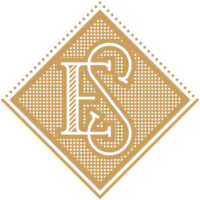












You must be logged in to post a comment.